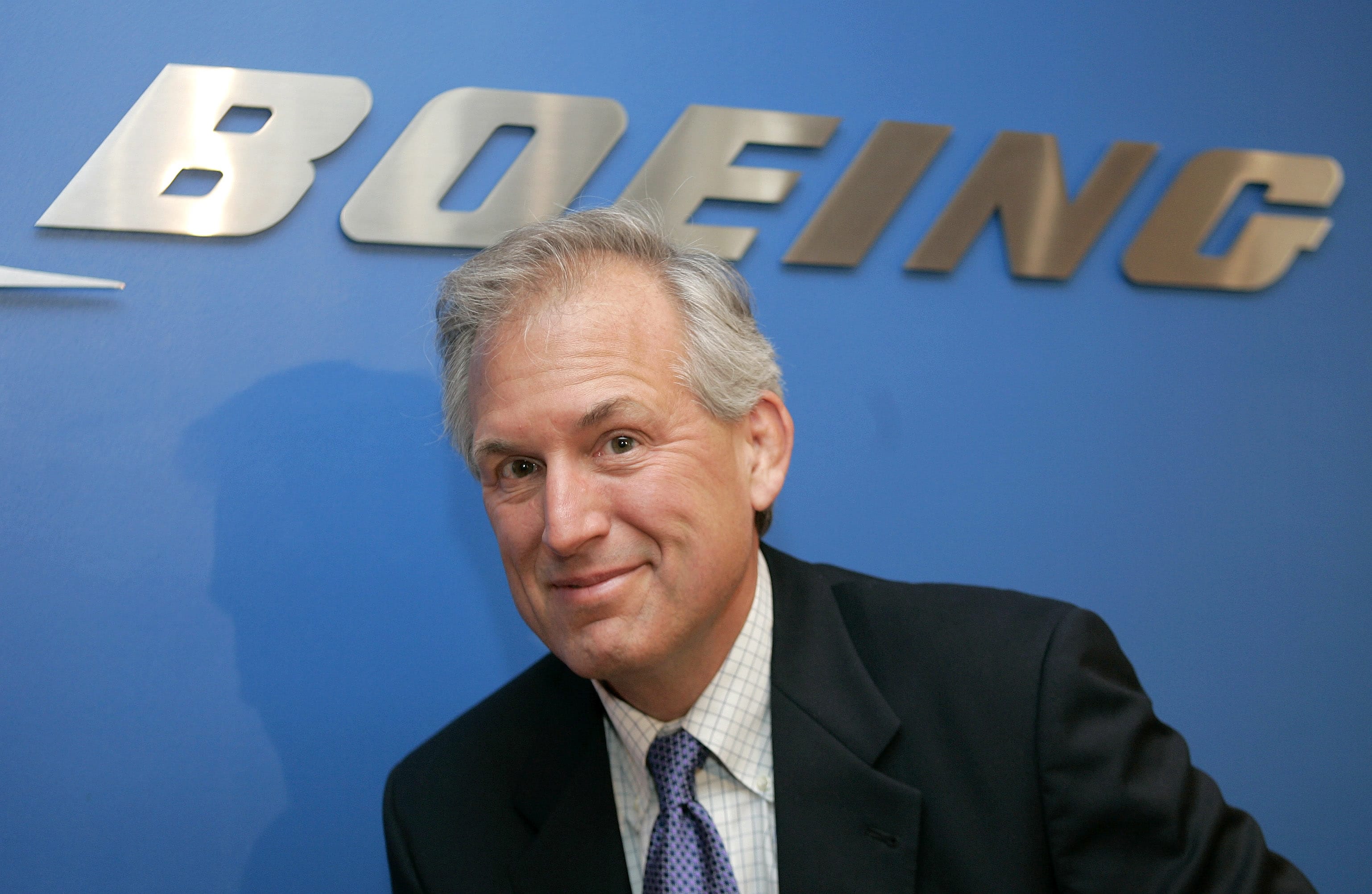Boeing Chief Executive Jim McNerney said Wednesday the jetmaker won’t shoot for the moon in the foreseeable future by launching risky, game-changing new airplanes like the 707 in the 1950s or the 787 Dreamliner 10 years ago.
After sinking billions of dollars into the 787, and confronting downward pricing pressure in an industry where airlines demand “more for less” and Airbus provides cutthroat competition, for now Boeing is backing away from the bleeding edge of technology innovation.
Instead of Boeing inventing expensive new technologies, McNerney wants to re-use those already developed and cut costs.
“All of us have gotten religion,” said McNerney, speaking to Wall Street analysts at the annual investor conference in the Fairmont Olympic Hotel in Seattle. “Every 25 years a big moonshot … and then produce a 707 or a 787 — that’s the wrong way to pursue this business. The more-for-less world will not let you pursue moonshots.”
Instead of taking on such risk, the jetmaker’s new focus is on reducing costs, introducing innovation only in incremental steps, and where possible “replicating systems and technologies already proven and paid for” in developing new airplanes.
Michel Merluzeau, a Kirkland-based aerospace analyst with G2 Solutions, said McNerney’s conservative approach is the right one at this point in the industry’s development because promising future technologies are not yet mature enough to consider for commercial transport.
“From a technology standpoint, there is nothing coming in the next 10 to 15 years that will be a fundamentally revolutionary concept,” Merluzeau said. “So for that time frame he can rely on the advances of the 787. There is so much that can be exploited from that program for the 777X and the next generation narrow-body jet.”
The strategy McNerney outlined Wednesday is not new, though he hadn’t previously articulated it quite so starkly.
He noted that the first manifestation of this thinking came in 2011 when Boeing decided to build the 737 MAX, a derivative of the current 737 featuring new engines and minimal other changes, instead of an all-new airplane.
In that decision, Boeing’s hand was forced by Airbus’ move eight months earlier to do a very similar revamp of its rival A320.
But by now, it’s the new orthodoxy: evolution instead of revolution.
Longtime aviation-industry analyst Adam Pilarski agrees it’s the right strategy.
“Once you have spent the money on the 787, why not harvest?” Pilarski said. “It makes perfect sense.”
Hence Boeing is putting new engines and a new composite wing on the 777 to create the 777X, rather than building an all-new airplane.
The 777X wing will be a scaled-up version of the 787 wing. However painful and costly it was to develop, it’s now a proven technology that can be transferred at much less expense to the bigger jet.
“Without recounting the lessons of the last decade, which are imprinted on many of us, we’ve made it an imperative to de-risk the next decade,” McNerney said.
Even on the next all-new airplane, McNerney said, the mindset “will be to avoid the moonshot, unless we have to.”
Boeing is not alone. Airbus is in similar retrenchment mode, Pilarski said.
It’s considering launching a new A330neo, featuring new engines to revamp an old airframe, and may do the same to the A380 superjumbo.
Airbus Group Chief Executive Tom Enders in December said the European planemaker will “focus on improving our profitability, our earnings, as well as our cash situation,” according to a Bloomberg News report.
“Why should we spend large amounts of money when we can make significant incremental improvements?” Enders said.
For Boeing, a company that actually had a major role in sending men to the moon and whose corporate motto remains “Forever New Frontiers,” the strategy represents a cultural shift.
Boeing Vice Chairman and Chief Operating Officer Dennis Muilenburg said the company will deploy its top engineers accordingly, asking them to reuse already developed technologies on new platforms rather than starting from a blank sheet and making everything new.
“In the past, we may have said our best engineers are working on the new thing,” Muilenburg said. “Now, we want our best engineers working on innovative reuse.”
McNerney, stressing that “the next frontier” is producing new airplanes more efficiently and cheaply, outlined initiatives aimed at incrementally improving productivity and quality.
He even said the decision to locate the building of the 777X in Everett “reduced cost and execution risk” — although the company only committed to that course after threatening to take the work elsewhere and obtaining $8.7 billion in tax incentives from the Legislature and contract concessions including a pension freeze from the Machinists union.



